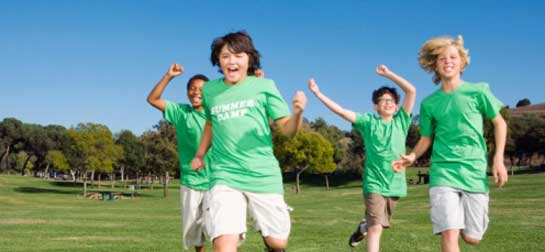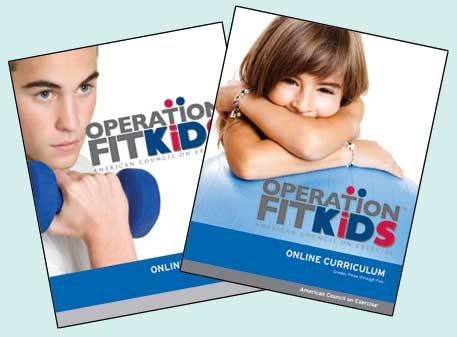
BY CHRIS FREYTAG
Our youth is our future. If that’s the case, I guess the future looks…well…fat? The news media provides a steady stream of stories warning of the dangers of the obesity epidemic spreading among today’s youth. In fact, according to the American Heart Association, one in three American kids are overweight or obese—nearly triple the rate since 1963. With good reason, childhood obesity is now the number one health concern among parents in the United States, topping drug abuse and smoking.
On the other hand, organized sports for kids—camps, leagues, school-based teams—have never been more popular. Boys and girls all over the country are playing sports year-round—everything from field hockey to football, T-ball to extreme dodgeball—and sometimes more than one sport at a time. Some highly talented or driven athletes are even taking on two-a-day trainings from an early age.
So, is there anything in between these two extremes? Is there a way to reach sedentary kids who just need to learn that movement can be fun? Are there opportunities for kids to get fit that don’t involve the significant time or financial commitments that come with participation in many organized youth sports programs?
This may be where we, as group fitness instructors, can help. I believe that we have a tremendous opportunity to improve the health and well-being of today’s youth. After all, we have mastered an important skill—the ability to motivate and energize groups of individuals to better health. The opportunities for volunteering are wide and varied, but here are a few ideas to get you headed in the right direction and thinking about how YOU could make a difference.
Start a Free Fitness Club or Class
Not all kids are interested in competing on a team, and not all families have the disposable income to spend on traveling soccer teams or competitive dance, but all kids need to be physically active. Think about ways you could create fitness opportunities in your community using your own unique gifts. If you are willing to volunteer your time one or two hours a week, you could start a free neighborhood fitness class or afterschool boot-camp. That’s exactly what James Fitzgerald, a personal trainer and group fitness instructor in South Hadley, Mass., has done and his goodwill is paying off. Fitzgerald started an adolescent afterschool boot-camp on Wednesdays in the parking lot of his fitness studio. “My clients started asking me how to help their kids stay fit and lose weight,” explains Fitzgerald. “Since my own daughter is not a fan of exercise, but loves to run and play games, I thought why not take this chance to actually teach health and fitness to her along with a bunch of other kids.” His motivation and inspiration started with his own child, but he was able to establish a loyal following by addressing the fitness needs of his clients’ kids as well. “Truly, it’s so much fun and I don’t charge [a fee for the class]. I’m rewarded by the kids and their parents in so many ways.”
Like Fitzgerald, Katie Lang, a physical education teacher and part-time group fitness instructor, saw a need in her community for youth-oriented fitness programs. As a result, she helped organize a program for 4th, 5th and 6th graders called ‘No One Left On Their Behind’ in Newport, Pa. “Many kids would come to school early and hang out in the hallways. Our program got them outside to the track, even in the winter (except for one or two super-cold days) and we logged their miles throughout the year with Popsicle sticks. Prizes were awarded on Fridays for total miles accumulated.” According to Lang, some participants covered as many as 50 to 60 miles during the school year.
Check Out Community Opportunities
While it might make sense to offer fitness programs at a gym or school, it’s a good idea to look around your community and consider what other venues might be available. This was the approach taken by Johanna Determann, a personal trainer and group fitness instructor who is also the Assistant Director of Wellness at Drake University. “I teamed up with the Des Moines Public Library to offer an after-school program we called Fit 4 Fun for kids ages eight through 12,” says Determann. “We spent 30 minutes each on exercise and nutrition education, and I led the kids through fun activities like yoga, focusing on all of the poses named after animals. We also did lots of cardio including mountain climbers and jumping jacks.” The library invited parents, which made it a family-affair. “It was personally rewarding for me because I work with the college population, but very rarely have the opportunity to introduce fitness to children,” explains Johanna. “The library is a great place to promote fitness in an atmosphere not typically associated with active play.”
New Operation FitKidsTM Curriculum Available
From the American Council on Exercise

Did you know that ACE offers a free, downloadable curriculum called “Operation FitKids®”? Two curricula are available according to grade level: one for grades 3–5, and the just-released program for grades 6–8. Operation FitKids is primarily designed to give teachers free lesson plans for teaching students about health and fitness, but it is a great resource for anyone who might be interested in working with children in these age groups. It is filled with information about healthy eating and fun, activity-oriented fitness ideas to get kids moving. Take a look and pass it on to the teachers in your life, or think about ways you could deliver it to the kids in your community.
Access and download both curricula free of charge from the ACE website.
Involve Corporations and Charities
Molly Hyland put her talents into play at work. “I love to teach and we have a program at the Minneapolis Heart Institute Foundation called Girls and Moms on the Move,” Molly says. “It’s a program for girls ages eight to 12 and their moms or caregivers to learn all about health, nutrition, physical activity, self-esteem and body image, all while training for a 5k walk or run. We launched this program last year in four different states with a total of 10 groups.” The program, which appeals to girls and moms across all ethnic groups, including African Americans, American Indians and Hmongs, has been well-received. Plans for expansion are ongoing and the curriculum is available to anyone wanting to start a similar group in their own communities.
Teena Medick, a group fitness instructor in Weston, Wisc., says her daughter is the catalyst for her efforts to increase physical activity among young people. “Our 12-year-old daughter runs a charity called Peyton’s Promise. She goes into elementary schools to talk about the problem of hunger in our communities, and asks kids to bring in canned food. And that’s where I come in,” explains Medick. “I go with her to the school and teach a workout using the cans as resistance.” Medick has come up with some fun ways to keep the kids engaged. For example, she challenges participants to assume the V-sit position (which she has renamed the Commercial-Sit) during commercial breaks while watching television. She also teaches the ABC plank, which involves alternately touching one hand to the opposite shoulder while saying the alphabet.
“We have been doing this for four years and Peyton's Promise has collected more than 15 tons of food for surrounding food pantries in Wisconsin,” says the proud mom. “It all started as a charity effort and then we decided that my group fitness talent could help the cause.”
Be a Fitness Coach
While team sports may not be for everyone, they nevertheless play a huge role in the lives of millions of kids every day. In fact, the number of kids who want to play sports is far greater than the number of adults available to coach and offer training guidance. Once again, this is an area where fitness professionals can use their expertise and fill an important need.
You may not know the first thing about soccer, or how to shoot a free throw, or even how to properly lace up a pair of hockey skates. And yet you still can be a coach—a fitness coach to help with participants’ functional training and conditioning. For example, while the head coach has half the team practicing proper footwork, you could take the other half of the team to the opposite end of the field for sports-conditioning drills such as walking lunges, burpees, push-ups, sit-ups and post-workout stretching. You could also incorporate information about healthy eating and lifestyle habits, which can be a great way to reach kids’ parents as well. Over the years, I have volunteered numerous times to lead my kids’ teams through stretching and yoga routines, injury prevention seminars, and fueling-for-fitness workshops.
In many communities, sports are serious business, and parents are often looking for ways to help their kids improve conditioning or increase strength to gain an edge over the competition. Linda Mertens, a personal trainer and group fitness instructor in Minneapolis, saw just such a need in her community. Her approach was to rent space at a karate studio and offer a youth-conditioning program. “No matter what sport you play you need to be conditioned, and all of my adult clients were asking for help with their kids,” says Mertens. “We meet two times a week for one hour. I have 10 kids at any given time. We train hard and talk about the importance of nutrition for performance.”
Small Effort, Big Gains
As the previous examples illustrate, it is possible to have a significant impact on kids’ health and well-being without making it your full-time job. Small efforts can yield tremendous results. I encourage you to take a moment to look at your life and see how you might reach out to the young people in your community. If doing something on your own feels too overwhelming, consider partnering with other group fitness instructors to offer classes or help coach a team.
Tennis great Arthur Ashe once said, “From what we get, we can make a living; what we give, however, makes a life.” Don’t miss out on this opportunity to help create a healthier generation of kids by giving your time and sharing your ability to educate and motivate them toward achieving a healthier and more active future.
_____________________________________________________________________

CHRIS FREYTAG is the author of the new book, Two Week Total Body Turnaround, and is the fitness expert and a contributing editor for Prevention magazine. She is ACE certified and a member of the ACE Board of Directors, a master trainer for SPRI Products and the creator of numerous fitness DVDs including Prevention Fitness Systems. You can see Chris at the 2010 ACE Fitness Symposium.